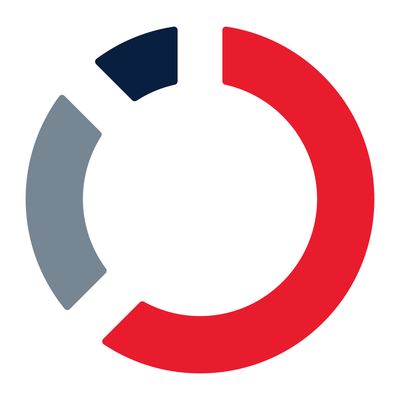The Internet As AntidoteThe Internet As Antidote
Technology helps alleviate regulatory and supply-chain headaches.


 The biotechnology and pharmaceutical industry continues to take long strides in developing IT systems that support manufacturing, research, and retail operations. In an industry that relies on a symbiotic relationship between research and the management of data, many biotechnology and pharmaceutical companies are turning to customer-relationship management and supply-chain applications to drive efficiency in the face of increasing federal regulation and consistent activity on the merger-and-acquisition front.
The biotechnology and pharmaceutical industry continues to take long strides in developing IT systems that support manufacturing, research, and retail operations. In an industry that relies on a symbiotic relationship between research and the management of data, many biotechnology and pharmaceutical companies are turning to customer-relationship management and supply-chain applications to drive efficiency in the face of increasing federal regulation and consistent activity on the merger-and-acquisition front.
CRM is particularly important to biotechnology and pharmaceutical companies as they become more conscious of their changing supply chains, says Roddy Martin, service director of consumer packaged goods and life sciences at AMR Research. Because biotechnology and pharmaceutical companies are in a constant state of merger and acquisition, CRM is important to help them maintain a consistent relationship with their suppliers, their customers in the health-care industry, and consumers. "Many of these companies have gotten their arms around the fact that they need a global supply-chain strategy, but they're closer to the beginning than the end," Martin says.
The Internet age has generated new challenges and increased scrutiny from the U.S. Food and Drug Administration. Martin estimates that biotechnology and pharmaceutical companies spend as much as 40% of their IT budgets to manage compliance among their various IT systems, run by manufacturing, research and development, and retail business units. "Compliance requirements have always been there," Martin says. "It's just that now, compliance has taken on the digital age."
Many of these companies are wrestling with new FDA guidelines for electronic records and digital signatures while trying to maintain discretion and accountability. "In the past, biotechnology and pharmaceutical companies worked in paper-based systems; now that it's electronic, it's harder to determine if records are changed," Martin says. The FDA wants to see that records are authentic.
FDA Regulation 21 CFR Part 11, for example, calls for the management of digital signatures and electronic records. While the law has been on the books since 1997, Martin says the agency has increased attention on it now that year 2000 compliance work is becoming a distant memory. Biotechnology and pharmaceutical companies will spend $100 million to $250 million to make sure their electronic records are properly secured in compliance with that one regulation, he says.
IT has to be aligned with business units, says Cooper, Bristol-Myers Squibb's CIO. |
Bristol-Myers Squibb Co., an $18.22 billion developer of pharmaceutical and health-care products, has made technology upgrades a priority because IT touches such a large portion of the New York company. Like several other companies in the industry, where IT and scientific research intersect at the collection and distribution of data, the technology executive's first objective has to be aligning IT with the different business units, CIO Jack Cooper says. Bristol-Myers Squibb has assigned an IT counterpart to each business-unit manager within the company. For example, in the research and development business unit, a VP of IT works to ensure that the unit's IT needs are met. This model is particularly useful in the biotechnology and pharmaceutical industry, Cooper says, because of the high volume of acquisitions and divestitures.
In October, Bristol-Myers Squibb made good on its plans to upgrade to SAP 4.6, a move necessary to handle euro conversion. At the same time, it also implemented SAP's business-warehouse software to create data warehouse systems for the company's purchasing activity worldwide. Cooper says that since July, his company has been working to implement an SAP human-resources module that will manage data about Bristol-Myers Squibb's 50,000 active employees, as well as another 50,000 workers who've retired. "On a worldwide basis, we'll be able to count and communicate with each of our employees and make the process self-service," Cooper says.
To coincide with the SAP HR rollout, Bristol-Myers Squibb plans to implement in the United States by year's end a Web-based portal using technology from Plumtree Software Inc. The portal will let the company's line-of-business managers push information to their users' desktops when they log on and will provide a flash of news that specifically targets a particular user group. Cooper sees this technology manifesting itself not only in the Web-based publication of departmental goals and procedures but also to transmit messages that pop up in the portal in real time.
At Eli Lilly and Co., the $10.86 billion manufacturer of medications such as Prozac for depression and Evista for osteoporosis, Web-based portal technology is the backbone for how work will be done in the future. Roy Dunbar, Lilly's CIO, sees the pharmaceutical industry as one deeply challenged by the cost of clinical development, particularly in the amount of time and resources devoted to documenting research.
In April, the Indianapolis company wrapped up an 89-day, $3.5 million project to deploy a portal using Plumtree software with catalog and search capabilities from Semio Corp. This portal links about 19,000 employees to shared documents and information. Its versatility makes the portal a sound investment, Dunbar says. Salespeople, marketing staff, physicians, and scientists--mobile or wired--will all be able to use the portal's knowledge-management capabilities.
"All biotechnology and pharmaceutical companies share the need to store information for decades while research and regulation processes are completed," Dunbar says. Whereas this information had traditionally been kept in copious volumes of scientific notebooks and spreadsheets, it now needs to move online because of the new FDA regulations. Lilly's Molecule Library, for example, is a knowledge-management application linked to the portal that lets regulatory, scientific, and other workers find information about molecules in seconds. Before the Molecule Library, gathering this information might have taken weeks rather than minutes. The Molecule Library was a $2 million investment that Lilly made more than 18 months ago; Dunbar estimates its return on investment, primarily through time saved searching for information, will total $27 million during the next 10 years.
The biotechnology and pharmaceutical industry is going through a significant change, and IT will play a prominent role in supporting this transition, says Bruce Fadem, CIO and VP of American Home Products Corp., a $13.26 billion Madison, N.J., company. "The Web is the great unifier on the supply-chain side of the business," Fadem says.
Fadem calls American Home Products' IT unit a catalyst for change within the company. Early last year, the company established a business unit to develop E-commerce strategy. One key element of the plan is VaccineWorld .com, a site launched earlier this year as a resource for health-care professionals and consumers, where they can research vaccines such as FluShield, Hibtiter, and Prevnar, as well as access immunization schedules. Physicians can use VaccineWorld to gather information, order products, and learn about order status via the Web.
The Internet has taken collaboration with supply-chain partners to an unprecedented level. Abbott Laboratories' most significant IT development of the past year has been its role in launching the Global Healthcare Exchange, a consortium of biotech and pharmaceutical companies looking to create an online marketplace that helps health-care facilities function more efficiently. One of the exchange's main goals is to find out how an online supply chain can bring value to the industry, says Karen Miller, VP of IT for the $13.75 billion Abbott Park, Ill., company.
The Global Healthcare Exchange helps IT organizations focus on collaboration, Miller says. The exchange does this in part by assigning each buyer a number that suppliers can use as a consistent point of reference. Clients register as a customer of the exchange rather than a customer of a particular vendor. "The simpler it is for the client, the more likely they're going to place an order," Miller says.
Along with Baxter Healthcare, Johnson & Johnson, GE Medical Systems, and Medtronic, Abbott has been working on the live exchange since the beginning of the year to make it a neutral site for the health-care and pharmaceutical industries.
Eli Lilly's Dunbar hopes the cost of compliance won't be as high as analysts are predicting, but he sees the value in such an investment. The FDA's new standards "will require some investments," he says, "but they're the types of standards that should be viewed as good practice."
Closeup Biotechnologies & Pharmaceuticals
Rank | Company | Revenue in millions | Revenue Change | Income (loss) in millions | Income Change | IT employees |
|---|---|---|---|---|---|---|
15 | Eli Lilly and Co. | $10,862 | 8.6% | $3,058 | 12.4% | 2,589 |
44 | Bristol-Myers Squibb Co. | $18,216 | 7.9% | $4,711 | 13.0% | 2,010 |
48 | Abbott Laboratories | $13,746 | 4.3% | $2,786 | 13.9% | 5,000 |
90 | American Home Products Corp. | $13,263 | 13.5% | ($2,371) | -93.2% | 2,475 |
136 | Pfizer Inc. | $29,574 | 8.0% | $3,726 | -24.7% | 3,182 |
239 | AstraZeneca Pharmaceuticals LP | $15,804 | 4.4% | $2,909 | 16.0% | 3,380 |
300 | Express Scripts Inc. | $6,787 | 58.3% | ($9) | -106.0% | 549 |
467 | GlaxoSmithKline | $27,480 | 10.4% | $5,619 | 13.0% | 6,000 |
SnapShot 500/Biotechnology & Pharmaceuticals |
Inside companies |
Average portion of revenue spent on IT |
Portion of IT organizations that sell services or IT products to other companies |
Portion of companies that say wireless E-commerce will contribute to E-business revenue stream |
Senior IT executive is a member of executive management committee |
Average portion of customers included in electronic supply chain |
How companies divide their IT budgets |
New product and technology purchases |
IT consulting and outsourcing |
Research and development |
Salaries and benefits |
Applications |
Everything else |
How often companies re-examine their IT spending plans |
Daily |
Weekly |
Monthly |
Quarterly |
Twice a year |
Annually |
DATA: INFORMATIONWEEK RESEARCH |
About the Author
You May Also Like






